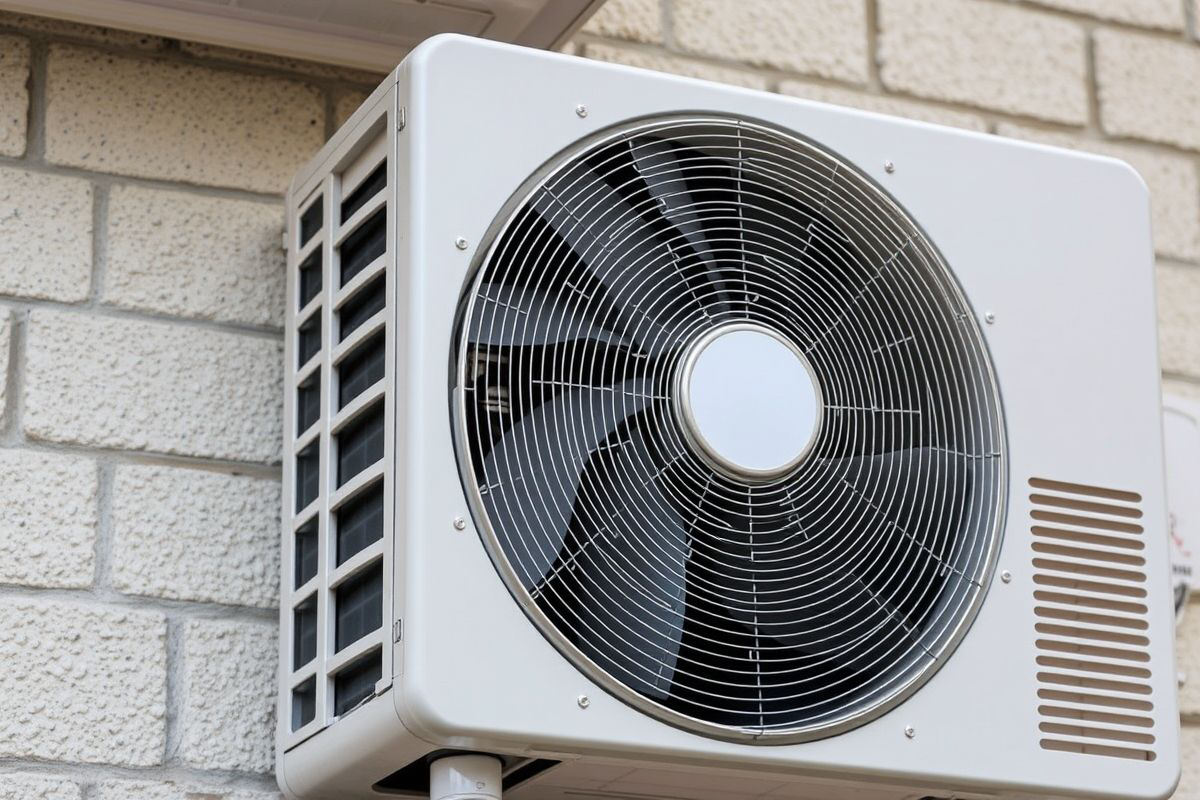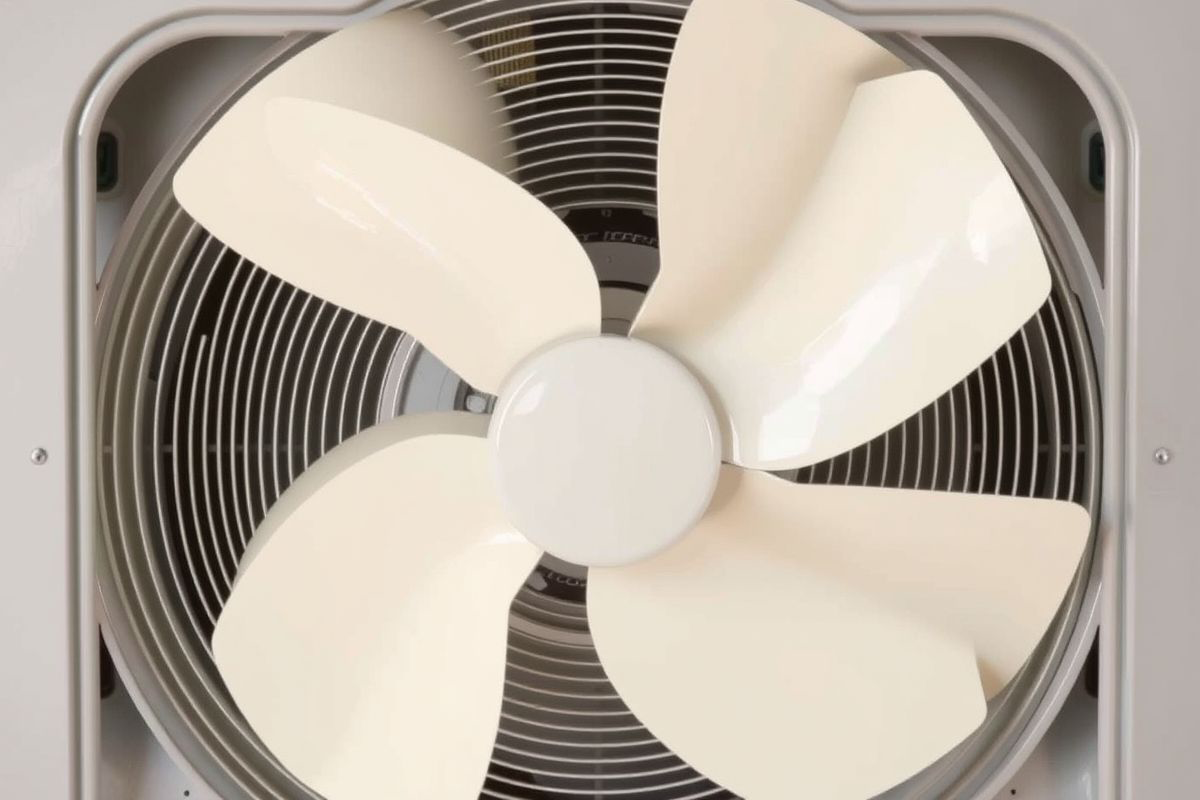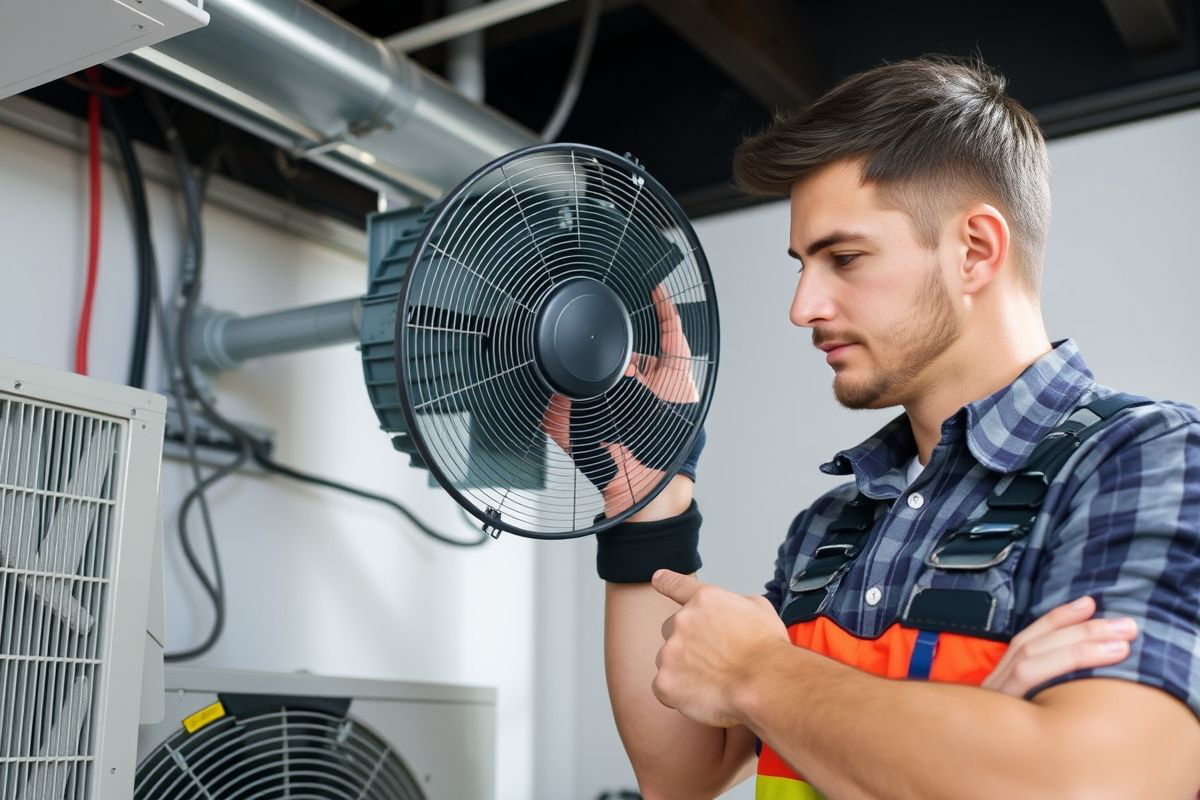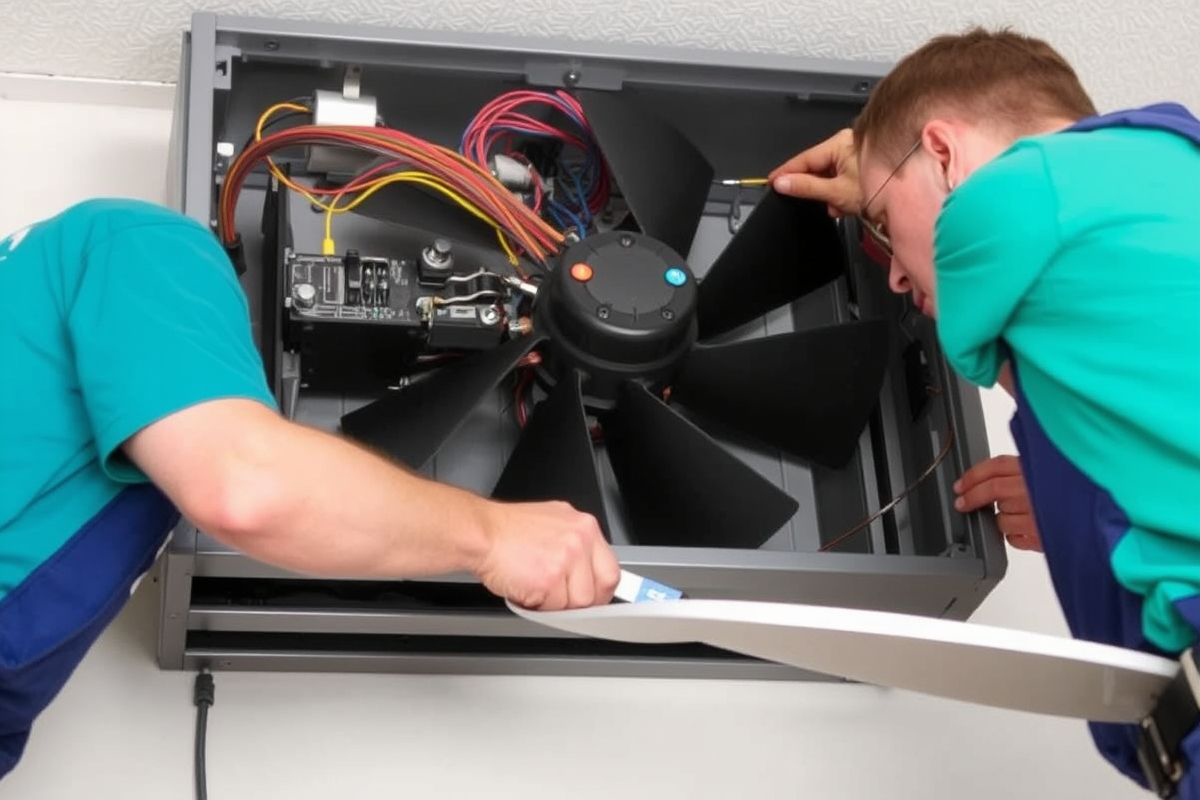
Introduction
When it gets very hot, a broken HVAC system can make your home feel really uncomfortable. A usual problem is when the air conditioner fan, or AC fan, stops spinning, resulting in hot air circulating instead of cool air. This can feel scary, but you don’t need to panic just yet. This simple guide will help you understand why your air conditioner fan might not be working. You will learn how to fix it and get your air conditioner running well again.
Understanding Your AC Fan Issue
Let’s be honest. How an air conditioner works can be hard to understand. However, if you learn the basics about your AC fan and its parts, you can notice problems when they arise.
An air conditioning system helps cool the air in your home by using fans. There are two main fans: the indoor blower fan and the outdoor fan.
- The indoor blower fan takes warm air from your living areas.
- It then pushes this air over cold evaporator coils.
- After this, the cooled air goes back into your home.
At the same time, the outdoor fan, known as the condenser fan or outdoor AC fan, removes heat from outside. If the indoor blower fan or the outdoor fan stops working, your AC system won’t cool your space as well.
How an AC Fan Operates
The fan motor is the key part of your AC fan. It is the best way to power the fan blades. This motor takes electricity and changes it into mechanical energy. This change makes the blades spin.
The motor needs a little support to function. This is why capacitors and a centrifugal switch are key. These small, round parts save electrical energy. The start capacitor provides a burst of energy to help the motor begin turning. After the motor starts, the run capacitor plays a role in keeping it running well.
When the motor, capacitors, and fan blades all work together, they help move air smoothly. This air flow is key for your air conditioning to cool your home effectively.
Initial Steps Before Troubleshooting
- It’s wise to look for simple problems first before trying to solve harder ones.
- These fast checks can help you find simple errors.
- Check Your Power Supply: Make sure your AC unit has electricity. Look at the circuit breaker in your breaker box. If the breaker has tripped, turn it off and then on again to reset it. Also, check the power switch on your indoor air handler. Make sure it is on and that it has its own circuit.
- Verify Thermostat Settings: This might seem simple, but wrong settings can stop your fan from working. Set your thermostat to “cool” mode and lower the temperature a few degrees below the room’s current temperature. Ensure the fan setting is “auto” or “on” for continuous use while the system runs.
- Inspect the Air Filter: A dirty air filter can block airflow and stress the fan motor. Find your air filter, often behind a return air vent or inside the air handler unit. If it is very dusty, replace it with a new one.
Common Causes for AC Fan Malfunction

If the basic checks don’t fix the problem with the spinning fan, you should look for other possible causes.
Your AC fan relies on several parts to function properly. If any part has a problem, the fan might not work. The issues can be from electricity, like blown fuses or tripped breakers. They can also be mechanical, such as a worn-out motor or a broken capacitor. Let’s take a closer look at some common causes.
Electrical Failures: Breakers and Fuses
- Look at the power supply for the AC fan.
- Keep the fan clean and clear of dust.
- Check for any broken wires or connections.
- Make sure the thermostat is working right.
- Test the fan motor to see if it runs.
- Tripped Circuit Breaker: Your AC unit needs a lot of power. If it uses too much, it can trip the circuit breaker. Check the main breaker box panel for a tripped breaker. It should say it is for the AC unit.
- Blown Fuses: Some older AC systems use fuses instead of breakers. A blown fuse may look like a broken wire inside it. This can stop the fan from getting any power.
- Loose Wiring: Over time, electrical connections can become loose. This can lead to an unstable power supply or even no power at all. Check the wiring for the fan motor, capacitor, and other parts. Look for anything that is loose or damaged.
Thermostat Settings and Issues
Your thermostat is important for how your AC fan works. If the settings are wrong or if the thermostat is broken, it can affect how well the fan performs.
- Fan Setting: Make sure your thermostat’s fan setting is either “auto” or “on.” With “auto,” the fan starts and stops with the AC system. With “on,” the fan runs all the time, even if the AC is not cooling.
- Temperature Set Point: If the temperature on your thermostat is close to or higher than the room temperature, the AC may not run. This means the fan stays off. Turn the set temperature lower than the room temperature to start cooling.
- Faulty Thermostat: If your thermostat is not working correctly, it might not send the right signals to the AC system. This can keep the fan off. If you think the thermostat could be the issue, consider getting a new one or call a professional HVAC technician to see if you need to replace the entire unit.
Condenser Unit Problems
The outdoor unit of your AC system has the outdoor condenser unit. This unit contains the AC unit fan. At times, the fan can have problems that can affect its performance, and in extreme cases, it can lead to further complications.
- Condenser Fan Motor Failure: A condenser fan motor can wear down over time and could have various fan motor issues. When this happens, the fan may stop working altogether.
- Capacitor Malfunction: The capacitors in the condenser unit help the fan motor start and work. If they fail, the fan will not move.
- Debris and Obstructions: Items like leaves, dirt, or other clutter can block the condenser fan. This blockage can lessen airflow or even stop the fan. To keep good airflow, regularly clear any debris from the condenser unit.
DIY Fixes for a Non-Spinning AC Fan

Some problems with your AC fan may need a professional to repair. However, there are some easy DIY fixes that might help your fan start working again.
Before you start any repairs, make sure to turn off the power to your AC system at the circuit breaker. This will help keep you safe from getting shocked. If you feel unsure about working with electrical parts, it is best to call a qualified professional.
Resetting Your AC System
A simple reset can often fix small electrical issues. This can help when the AC fan is not working.
- Turn Off the System: First, switch off your AC system completely. Use both the thermostat and the circuit breaker to do this.
- Wait and Restart: Wait for about 5 to 10 minutes. This lets the system clear any extra electrical charge. After waiting, turn the circuit breaker back on, then switch on the thermostat.
- Observe the Fan: After turning the system back on, watch the fan to see if it spins. If it starts moving, the reset probably worked.
Cleaning and Maintenance Tips
Regular cleaning and care can stop many problems with your AC fan. It can also make your system last longer.
Here are some key maintenance tasks:
- Regularly Replace or Clean the Air Filter: A dirty air filter blocks airflow. This makes the fan motor work harder. Change disposable filters every 1-3 months. For reusable filters, clean them each month during hot weather.
- Clean the Outdoor Condenser Coils: The outdoor condenser coils can get dirty and blocked with debris. This makes it hard to release heat. Use a hose to rinse off the dirt and grime from the coils.
- Lubricate the Motor Bearings (If Needed): Some older fan motors need lubrication. Check your AC unit’s manual to see if yours requires lubrication. If it does, use the right lubricant on the motor bearings.
When to Call a Professional

Fixing small problems on your own can be okay. But if you have trouble with your AC fan, it’s smart to call a professional. If you have tried everything and your AC fan still doesn’t work, reach out to a professional HVAC technician. Trying to fix difficult repairs by yourself may hurt your system. This could lead to higher costs later on.
Identifying Serious AC Unit Issues
Here are some signs that you might need expert help:
- Unusual Noises: If your AC unit makes sounds like grinding, screeching, or banging, it often means something is wrong. You should call a professional for help.
- Burning Smell: A burning smell usually indicates an electrical problem. This might be due to a failing motor or overloaded wires.
- Frozen Evaporator Coil: If you see ice on the indoor evaporator coil, it often means there is a refrigerant leak or a problem with airflow. Both issues need a professional to fix them.
Benefits of Professional AC Repair
Getting your AC fixed might seem simple to do by yourself. However, there are several benefits to asking for help from a professional HVAC technician.
- Accurate Diagnosis and Repair: Skilled technicians can identify the real issue with your AC fan. This ensures the correct repair is done right the first time.
- Safe Handling of Refrigerant: AC systems use refrigerant, which can be dangerous. Professional technicians are trained to handle it safely. This helps protect the environment.
- Warranty Protection: Many AC brands require professional repairs and installations. By using a pro, you can keep your warranty intact and avoid expensive repairs later.
Conclusion
In conclusion, fixing issues with your AC fan quickly is very important. This helps keep your space comfortable. Understanding how your AC system works can help you find and fix common problems easily. Some simple fixes include resetting your system and cleaning it regularly. However, there are times when you may need a professional to avoid further damage. Don’t wait to get expert help if your AC isn’t working right. If you want more tips or need a pro, you can schedule a free consultation with our team. Stay cool and ensure your AC system runs smoothly for a fresh home.
Frequently Asked Questions
Why won’t my AC fan start spinning?
Many things could cause the issue. These might be problems with the fan motor. A tripped circuit breaker could also be the reason. A failed capacitor is another possibility. Lastly, the thermostat settings might be incorrect. A capacitor could be either the start capacitor or the run capacitor.
Can I repair my AC fan myself?
Some DIY fixes can help. You should know what you can do on your own. For example, you can replace a dirty air filter or reset the system. However, if you need to work with electrical parts or refrigerant, you should call a qualified HVAC technician. This will keep you safe and protect your warranty.
How often should I service my AC to prevent fan issues?
Scheduling professional maintenance for your AC once a year is very important. It is best to do this before the cooling season begins. This practice can help stop many AC fan problems. During the maintenance, the technician will clean the unit. They will also look for any damage and make sure that all parts are working as needed.
Also, remember to change your air filter regularly. You should do this every 1 to 3 months. A clean air filter helps the AC fan and its motor work well. It allows good airflow and reduces pressure on the system.
